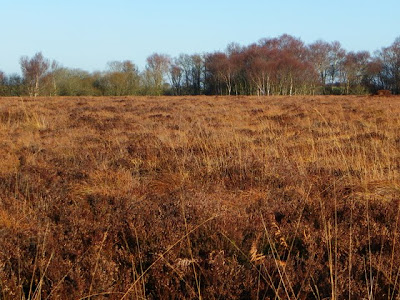This blog is a recording of field trips during my undergraduate degree at LIT Thurles,Ireland.
Wednesday, May 18, 2011
Enjoying the sunshine in Durrow
Durrow Co Laois on the 23/3/2011.
Bishops Wood and Knockanoran woodland is an alluvial woodland just outside Durrow Co Laois off the R434. Lat: 52° 51" 6.479' Long: -7° 24" 46.74' .
The site is a natural floodplain of the Erkina river and is listed on Annex 1 of the EU Habitats Directive. Alluvial woodlands are very scarce in Ireland and especially in Europe, they occur where sediment accumulates due the action of water. The priority site covers 95.2 ha on either side of the Erkina river where restoration techniques are been carried out to improve the biodiversity of the area. The removal of non native tree species and efforts to reinstate natural water flow are the main areas of restoration. The work is carried out by Coillte and is funded from the EU LIFE PROJECT.
The site is a natural floodplain of the Erkina river and is listed on Annex 1 of the EU Habitats Directive. Alluvial woodlands are very scarce in Ireland and especially in Europe, they occur where sediment accumulates due the action of water. The priority site covers 95.2 ha on either side of the Erkina river where restoration techniques are been carried out to improve the biodiversity of the area. The removal of non native tree species and efforts to reinstate natural water flow are the main areas of restoration. The work is carried out by Coillte and is funded from the EU LIFE PROJECT.
Tuesday, April 5, 2011
Mitchelstown Caves on the 16/3/11
The Caves are situated along the R629 between Cahir in Tipperary and Mitchelstown in Co Cork, grid ref R656186. They were found in 1833 by a local man Mr Condon when his crowbar fell through a passage as he was out quarrying rock. The caves are made of limestone and the temperature is a consent 12 degrees Celsius.
Monday, April 4, 2011
Scotts Pine trail
Galtee Mts
Labels:
galtee,
galtee mts,
GLEN OF AHERLOW,
ireland,
tipperary
The Glen Of Aherlow (Tipperary) 9/3/2011
The Glen of Aherlow is found between the Galtee Mts to the south and the Slievenamuck ridge to the North in South West Tipperary.Spectular views can be seen looking South to Co Cork. Grid Ref R926296.
Thursday, March 31, 2011
Knockbarron wood/Esker
After the looped walks around the Slieve Blooms we headed off for Knockbarron wood. The woodland is located along an Esker. Eskers can be found in many central parts of Ireland. They can be thought of as rivers of sediment and rubble that got transported when tunnels formed within glaciers. They sometimes can travel for miles and sometimes contain rich mineral and rock deposits. Knockbarron wood is considered the finest example of these land formation in Ireland. The woodland itself is a managed by various bodies and it contains a rich diversity of species especially solitary Bees and rare plants due to the underlining rock.
Small Larch forest
The fight for higher ground
Monday, February 14, 2011
Glenafelly river
Mosaic habitat
 The majority of the lower slopes of the upland blanket bog is afforestated with Sitka spruce Norway spruce and larch species while semi natural hardwood trees are along the riparian zone of the river.
The majority of the lower slopes of the upland blanket bog is afforestated with Sitka spruce Norway spruce and larch species while semi natural hardwood trees are along the riparian zone of the river.
Timber
Labels:
carbon store,
cash crop,
evergreen,
product,
renewable energy,
timber,
trees,
wood
Slieve Bloom Mountains map 26/1/2011
Monday, January 31, 2011
Hovering Kestrel
 Birds of prey are always a fantastic sight to get to see. These birds are truly amazing, as they can hover for long periods and make it look so effortless. It is understood that they can see in ultraviolet light which is a real advantage when hunting for rodents, as rodents urine glow when viewed in ultraviolet. The wonders of natural selection.
Birds of prey are always a fantastic sight to get to see. These birds are truly amazing, as they can hover for long periods and make it look so effortless. It is understood that they can see in ultraviolet light which is a real advantage when hunting for rodents, as rodents urine glow when viewed in ultraviolet. The wonders of natural selection.
Labels:
biodiversity,
bird,
bird of prey,
flight,
hovering,
kestrel,
ornithology
Fallow Deer
Labels:
black and white,
Fallow Deer,
grass,
Little Brosna Callows
The Little Brosna Callows bird hide
 The glare from the sun is a problem when trying to identify species, ice on the water too is an added challenge
The glare from the sun is a problem when trying to identify species, ice on the water too is an added challenge
Mixed flock
Labels:
ashton callows,
biodiversity,
birds,
mixed flock,
water
Ashton Callows
 Water levels slightly lower when compared to Sunday December 5 post (view from Ashton Callows bird hide)
Water levels slightly lower when compared to Sunday December 5 post (view from Ashton Callows bird hide)
The Little Brosna Callows
We returned again to the Little Brosna Callows on the 19/Jan/2011, grid reference M970115. The water levels were slightly lower than our previous visit and surprisingly bird numbers were low too. This may be due to the extreme low tempertures over Ireland through the months of November and December. It was suggested from a member of Birdwatch Ireland who was on site the day we visited that perhaps the migrating birds had continued further south to Spain and Portugal. When all winter data is collected we will get a better understanding of this theory.
Labels:
birds,
birdwatch ireland,
extreme,
Little Brosna Callows,
M970115,
portugal,
spain
Wednesday, January 26, 2011
Wren claw anatomy
Labels:
anatomy,
bird,
hallux,
passeriformes,
passerine,
phalanx,
tarsometatarus,
wren
Subscribe to:
Posts (Atom)


































